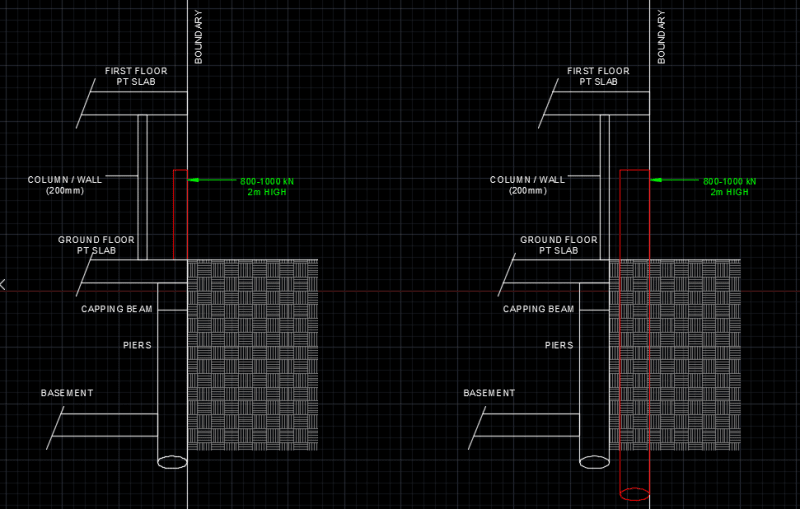I have to design some vehicle barrier for the proposed building. Load given is 800-1000 kN applying at around 2m from NGL.
I was asked to use the external structural wall/column to resist but I am not comfortable with that. Instead, I am thinking about having extra cantilever barrier (shown in red at LHS) from slab/capping beam to hold the load. Do you think it is doable? what about the connection and the effect to PT slab?
I also have this scenario where there is no slab for me to cantilever. So I am thinking having RC post (shown in red at RHS) embed into soil.

What is your thoughts?
Thank you.
I was asked to use the external structural wall/column to resist but I am not comfortable with that. Instead, I am thinking about having extra cantilever barrier (shown in red at LHS) from slab/capping beam to hold the load. Do you think it is doable? what about the connection and the effect to PT slab?
I also have this scenario where there is no slab for me to cantilever. So I am thinking having RC post (shown in red at RHS) embed into soil.

What is your thoughts?
Thank you.
